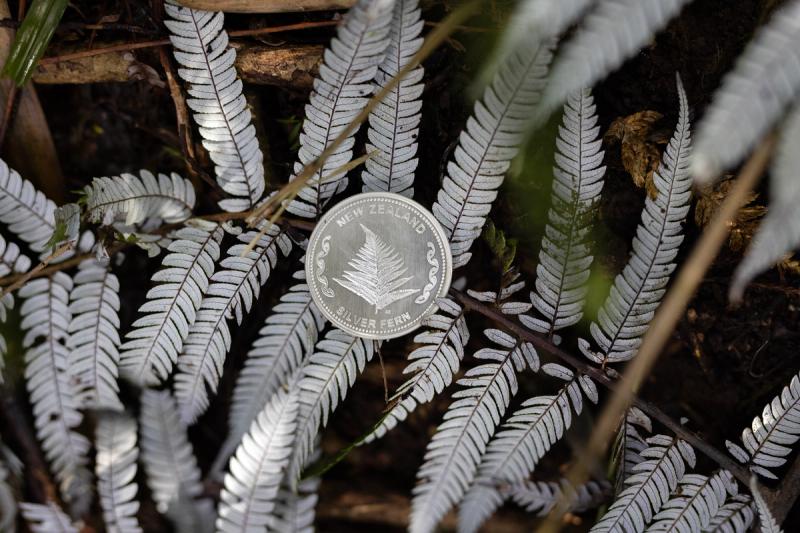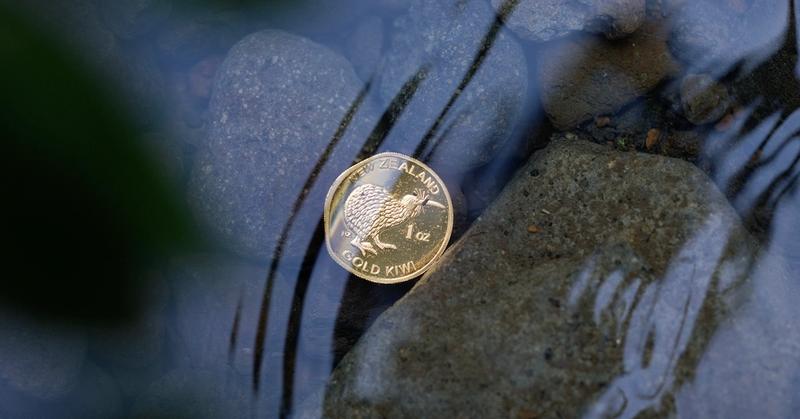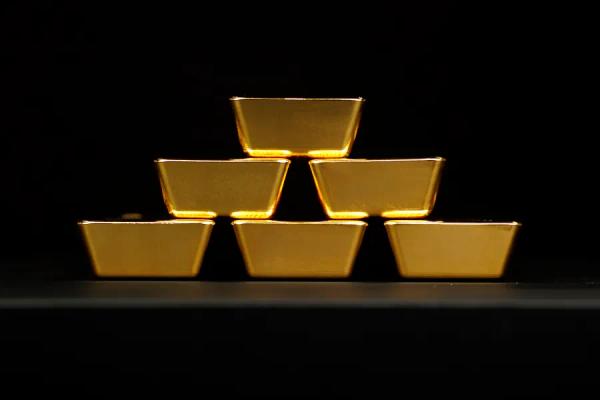Gold and silver have been valued by civilizations for thousands of years — from ancient empires to modern economies. Today, many investors include precious metals in their portfolios as part of a diversified investment strategy.
If you're considering precious metals for the first time, this guide explains the fundamentals: what makes gold and silver different from other investments, how they function in a portfolio, and what you need to know before making your first purchase.


Understanding Precious Metals as an Investment
Unlike shares, bonds, or property, precious metals are tangible assets. You can hold them in your hand. They don't rely on company performance, dividend payments, or rental income for their value.
Key characteristics:
- Physical and tangible — Real assets you can store and control
- Globally recognized — Traded and accepted worldwide
- Limited supply — Cannot be printed or artificially created
- Historical role — Used as money and store of value for millennia
These characteristics make precious metals different from paper assets, though like all investments, their value can fluctuate based on market conditions.
Why Investors Consider Gold and Silver
People invest in precious metals for various reasons. Understanding common motivations can help you determine if they align with your own goals.
1. Portfolio Diversification
Gold and silver often behave differently than stocks and bonds. During certain market conditions, when traditional assets decline, precious metals may hold steady or even increase in value — though this isn't guaranteed.
This low correlation with other asset classes means precious metals can potentially reduce overall portfolio volatility when held as part of a diversified investment strategy.
Important note: Diversification doesn't guarantee profits or prevent losses. All investments carry risk, and market conditions vary.
2. Inflation Considerations
Historically, gold and silver have often maintained purchasing power during inflationary periods. When the cost of goods and services rises, precious metals have sometimes preserved value better than cash holdings.
For example, during the 1970s oil crisis and subsequent inflation, gold prices increased significantly. More recently, during periods of economic uncertainty and monetary stimulus, gold reached historical highs.
Important note: Past performance doesn't guarantee future results. Inflation hedging effectiveness varies depending on many economic factors.
3. Tangible Asset Ownership
In an increasingly digital world, some investors value owning physical assets that exist independently of financial institutions, computer systems, or third-party promises.
Physical precious metals:
- Don't require electronic access
- Can't be frozen or restricted by institutions
- Exist outside the traditional banking system
- Provide a tangible form of wealth
Important note: While physical ownership offers certain advantages, it also requires secure storage and appropriate insurance.
4. Long-Term Wealth Preservation
Some investors view precious metals as a way to preserve wealth across generations. Gold and silver have maintained value throughout history — surviving currency reforms, economic crises, and political changes.
However, this preservation function operates over long time horizons and isn't guaranteed. Short-term price volatility can be significant.
5. Currency and Economic Uncertainty
During times of economic stress, geopolitical tension, or currency weakness, some investors increase their precious metals holdings. This behavior has historical precedent, though future patterns may differ.
Examples include:
- Banking crises (2008 global financial crisis)
- Currency devaluation (various countries throughout history)
- Political instability (regional conflicts and uncertainties)
Important note: Predicting which events will drive precious metals prices is difficult. Not all uncertain periods result in higher metals prices.
Understanding the Basics
Before investing, familiarize yourself with key concepts:
Bullion vs. Numismatic
Bullion: Products valued primarily for metal content
- Bars, standard coins, rounds
- Priced close to metal spot price plus small premium
- Investment focus
Numismatic: Collectible coins with value beyond metal content
- Rare or historical coins
- Priced based on rarity, condition, demand
- Collecting focus
For investment purposes, most people focus on bullion.
Spot Price vs. Retail Price
The spot price is the current global market price for one troy ounce of metal. It fluctuates constantly during trading hours.
The retail price is what you pay, which includes:
- The spot price
- Premium (covering production, distribution, and dealer costs)
- GST (if applicable, depending on product type)
Understanding this difference helps you evaluate pricing fairly.
Common Formats
Bars:
- Rectangular pieces in various sizes
- Generally lowest premiums
- Efficient for larger purchases
Coins:
- Government-issued, often with legal tender status
- Higher premiums but widely recognized
- Good for smaller, flexible purchases
Rounds:
- Coin-shaped pieces from private mints
- Medium premiums
- Varied designs
Each format has advantages depending on your goals and budget.


Getting Started: Key Steps
Step 1: Determine Your Goals
Ask yourself:
- Why am I interested in precious metals?
- What percentage of my portfolio makes sense?
- How long do I plan to hold?
- What are my liquidity needs?
- How will this fit with my other investments?
Consider consulting a licensed financial adviser to discuss how precious metals might fit your overall financial strategy.
Step 2: Set a Realistic Budget
Start with an amount you're comfortable investing for the long term. Many investors begin modestly and build positions gradually.
Considerations:
- Can you hold this investment for several years?
- Do you have emergency savings separate from this investment?
- Are you prepared for price fluctuations?
- Have you considered storage and insurance costs?
Precious metals are generally considered long-term holdings. Short-term price movements can be volatile.
Step 3: Choose Your Metal
Gold characteristics:
- Higher value per gram
- Lower volatility than silver
- Compact storage
- Strong historical store of value role
Silver characteristics:
- More affordable entry point
- Higher volatility (larger price swings)
- Industrial demand factors
- Requires more storage space per value
Many investors hold both metals in proportions that match their risk tolerance and goals.
Step 4: Select Your Format
Based on your budget and preferences:
- Larger budget, efficiency focus — Consider bars for lower premiums
- Smaller budget, flexibility needed — Consider coins or rounds
- Balanced approach — Mix formats to optimize cost and liquidity
There's no single correct choice. Your decision should reflect your circumstances.
Step 5: Understand Pricing
Before purchasing:
- Check current spot prices (we display them on our website)
- Compare premiums across products
- Understand total costs including any fees
- Note how premiums vary with size and format
Transparency in pricing helps you make informed decisions.
Step 6: Plan for Storage
Consider where you'll keep your investment:
Home storage:
- Requires quality safe
- Needs insurance coverage
- Provides immediate access
- Your security responsibility
Professional vault storage:
- Secure, insured facility
- Small ongoing fee
- Professional security
- Access by appointment
Many investors use both options, keeping smaller amounts accessible at home while storing larger holdings professionally.


Step 7: Keep Records
Maintain documentation of:
- Purchase receipts and invoices
- Serial numbers (for bars)
- Product specifications
- Storage locations (recorded separately from stored items)
- Insurance documentation
Good records support insurance claims, resale, and tax purposes.
Important Considerations
Market Volatility
Precious metals prices can fluctuate significantly:
- Daily price changes are normal
- Larger swings occur during economic events
- Short-term volatility doesn't necessarily reflect long-term trends
- Timing purchases or sales precisely is very difficult
Most successful precious metals investors focus on their investment timeline rather than trying to predict short-term price movements.
Liquidity and Selling
While precious metals are generally liquid, consider:
- Selling takes time — You need to find a buyer and arrange transaction
- Buyback prices fluctuate — Based on spot price at time of sale
- Premiums don't always recover — You typically sell near spot, having bought at spot plus premium
- Dealer margins apply — Buyback prices are usually slightly below spot
At New Zealand Mint, we offer a transparent buyback program, though prices depend on current market conditions.
No Income Generation
Unlike dividend-paying stocks or rental properties, precious metals don't generate income. Returns come entirely from price appreciation (or depreciation).
This means:
- No cash flow during holding period
- Opportunity cost vs. income-producing investments
- Best suited as one component of a diversified portfolio
Storage and Insurance Costs
Factor ongoing costs into your analysis:
- Home safe purchase (one-time)
- Insurance premiums (ongoing)
- Vault storage fees if used (ongoing)
These costs affect your overall return and should be considered when determining position size.
Building Your Position Gradually
Many investors use dollar-cost averaging — investing fixed amounts at regular intervals:
Advantages:
- Reduces impact of buying at price peaks
- Builds position steadily over time
- Removes emotion from purchase timing
- Fits budget constraints
Hypothetical example approach (for educational purposes):
- Purchase NZD $500 of gold monthly
- Automatically accumulates position
- Averages purchase price over time
- Creates investment discipline
Some investors use systematic purchasing approaches, such as regular fixed-amount purchases. Whether such a strategy is appropriate depends on individual circumstances and requires personal financial advice.
Common Misconceptions
Misconception 1: "Gold always goes up during crises"
- Reality: Gold often increases during uncertainty, but not always
- Other factors affect pricing
- Short-term movements can be unpredictable
Misconception 2: "Precious metals are risk-free"
- Reality: All investments carry risk
- Metals prices can decline significantly
- Long holding periods may be needed to recover losses
Misconception 3: "I can time the market perfectly"
- Reality: Even professionals struggle with timing
- Focus on your investment timeline instead
- Gradual accumulation often works better than large one-time purchases
Misconception 4: "More allocation is always better"
- Reality: Over-concentration in any asset creates risk
- Balance with income-producing investments
- Consider your complete financial picture


Why New Zealand Mint?
As New Zealand's only precious metals mint, we provide:
Quality Assurance:
- .9999 fine gold / .999 fine silver
- Independently tested products
- Clear certification and documentation
- Transparent purity standards
Transparent Pricing:
- Live spot prices displayed
- Clear premium disclosure
- No hidden fees
- Volume discounts where applicable
Education and Support:
- Detailed product information
- Market insights and resources
- Responsive customer service
- No-pressure environment
Flexible Solutions:
- Multiple product formats
- Storage options (home or vault)
- Buyback program
- Secure ordering and delivery
We aim to be a trusted partner in your investment journey, providing information and options while respecting that investment decisions are yours to make.
Next Steps
If you're ready to explore precious metals investing:
- Continue learning — Read our other guides on specific topics
- Review our products — Compare formats, sizes, and pricing
- Consider professional advice — Discuss with your financial adviser
- Start small — Initial purchases help you understand the process
- Ask questions — Our team is available to explain options
There's no pressure to purchaseimmediately. Take time to understand precious metals and determine if they suit your investment strategy.
Key Takeaways
✓ Precious metals are physical assets with historical value
✓ Investors use them for diversification, inflation considerations, and tangible ownership
✓ Multiple formats available to suit different budgets and goals
✓ Storage and insurance require planning
✓ Long-term perspective generally works better than short-term trading
✓ Professional advice can help integrate metals into your overall strategy
✓ Start with research and modest positions while learning
Precious metals can play a role in a diversified portfolio, but they're not suitable for everyone. Understanding how they work helps you make informed decisions aligned with your financial goals.
Important Information
This article is for educational and informational purposes only and does not constitute financial, investment, or tax advice.
Investment Risks: Precious metals investing carries risk. The value of gold and silver can fluctuate significantly, and you may receive less than you paid when selling. Market prices can be volatile, especially in the short term. You could lose money on your investment.
Past Performance: Any historical performance examples or data provided are for context only. Past performance is not indicative of future results. Market conditions change constantly, and historical patterns may not repeat. Previous price increases do not guarantee future appreciation.
No Guarantees: Precious metals do not guarantee protection against inflation, market losses, or currency devaluation. Their effectiveness varies significantly based on economic conditions, timing, holding periods, and numerous other factors beyond anyone's control.
Individual Circumstances Matter: Before making any investment decision, you should:
- Consider your complete financial situation, goals, and risk tolerance
- Understand that precious metals do not generate income
- Be prepared to hold investments for extended periods
- Ensure you have adequate emergency savings separate from this investment
- Factor in storage, insurance, and transaction costs
Seek Professional Advice: This content provides general information only and cannot account for your personal circumstances. Before investing in precious metals, consult with:
- A licensed financial adviser who can assess your full financial picture
- A tax professional regarding tax implications
- An insurance adviser about coverage needs
What We Provide: New Zealand Mint provides:
- Educational information about precious metals
- High-quality bullion products
- Storage and verification services
- Transparent pricing and specifications
What We Don't Provide: We do not provide:
- Financial advice or investment recommendations
- Portfolio allocation guidance
- Tax advice
- Predictions about future prices or market movements
- Guarantees about investment performance
Every investor's situation is different. What may be appropriate for one person may not suit another. Independent professional advice tailored to your specific circumstances is essential before making investment decisions.
